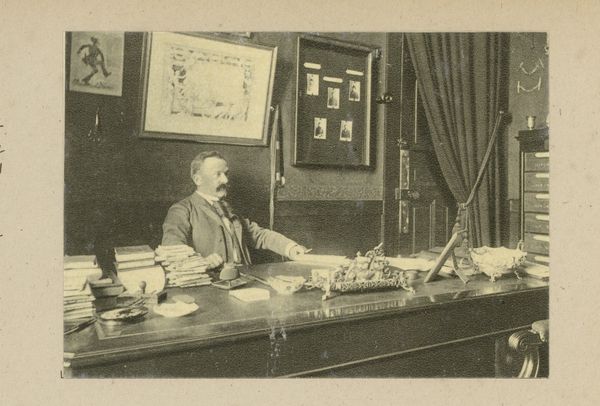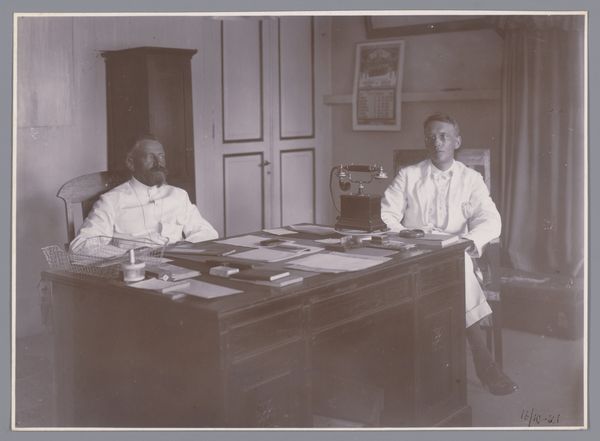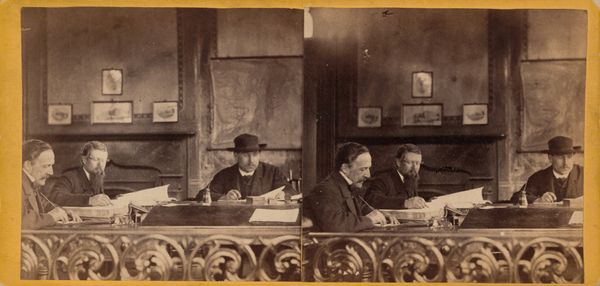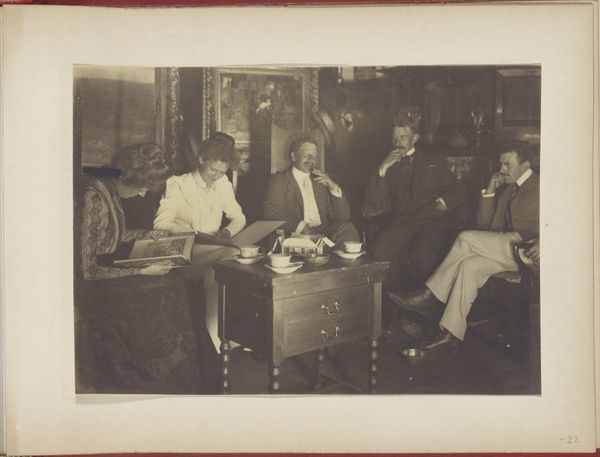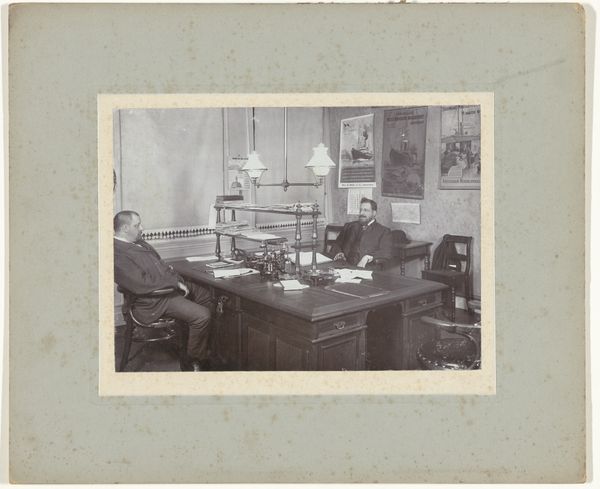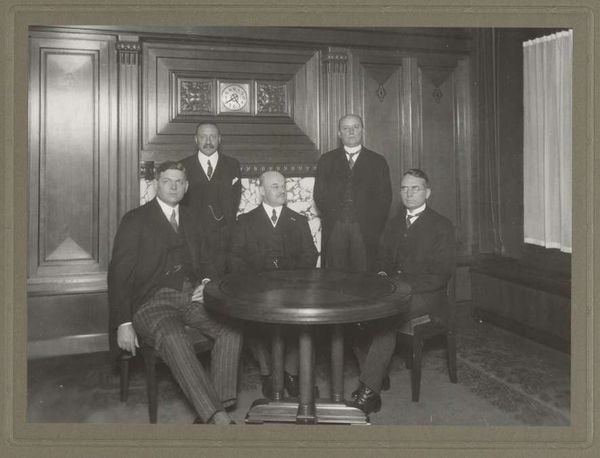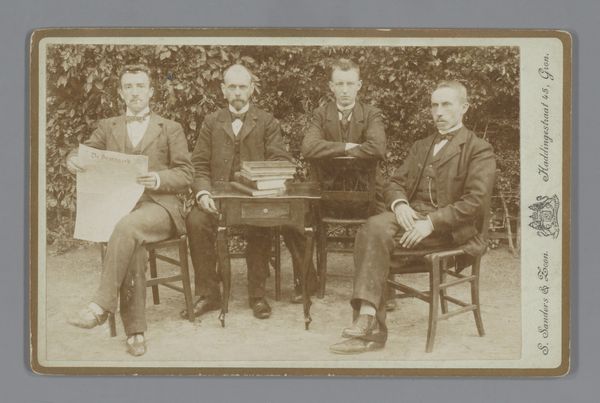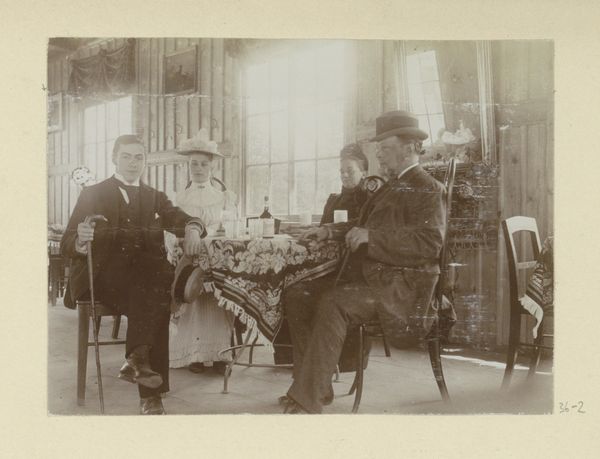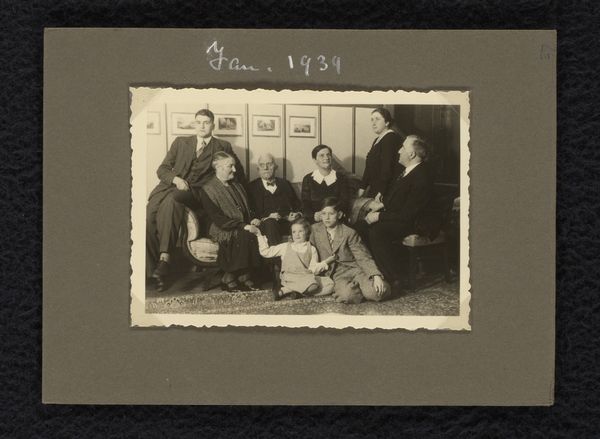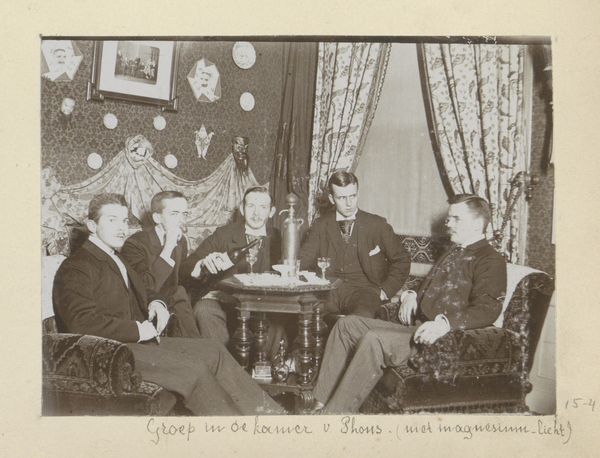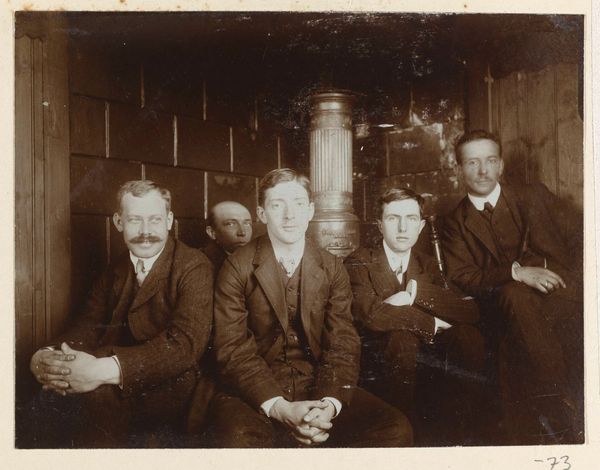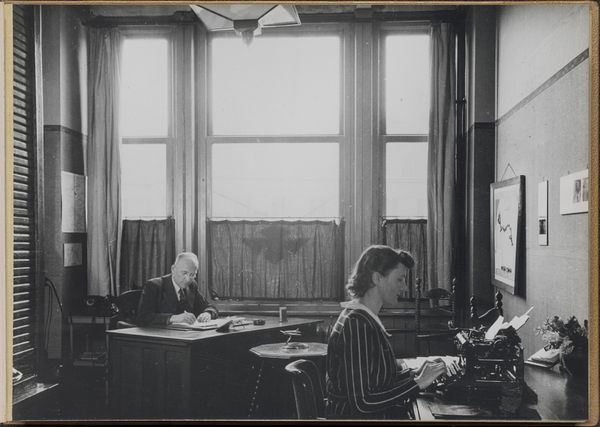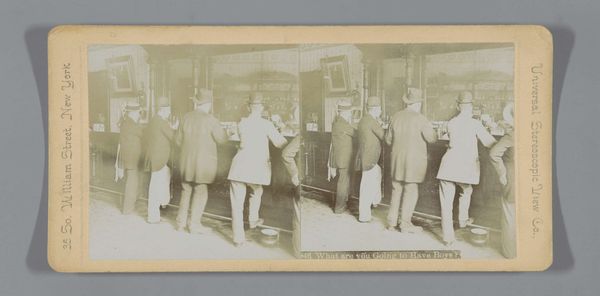
Judson E. Carpenter and Eugene J. Carpenter c. 20th century
0:00
0:00
gelatin-silver-print, photography, gelatin-silver-print
#
portrait
#
gelatin-silver-print
#
photography
#
gelatin-silver-print
#
united-states
#
genre-painting
#
realism
Dimensions: 6 1/8 x 8 1/16 in. (15.56 x 20.48 cm) (image)9 15/16 x 11 3/4 in. (25.24 x 29.85 cm) (mount)
Copyright: Public Domain
Curator: Here we have an intriguing gelatin-silver print, likely from the early 20th century, titled "Judson E. Carpenter and Eugene J. Carpenter." What strikes you first? Editor: Well, the stillness is palpable. It’s a study in authority and quiet industry, that heavy wooden desk anchors everything. It feels less like a photograph, and more like stepping into a hushed, formal office setting of the time. Curator: It really does. Looking at the composition, the Carpenter brothers are presented within their work environment, really embedding them within their context, which could offer insights into their roles in society and power dynamics. Editor: Power, definitely. It’s interesting how their positions and clothing reinforce the traditional image of established men. One sports a fez-like hat and crossed legs, exuding an easy confidence, while the other adopts a more reserved pose. Curator: Indeed, those subtle variations in pose and attire could be carefully staged indicators of personality or status within the business, it speaks volumes. How does this capture relate to the socio-economic history of Minneapolis at that time, the city in which this photograph is now held? Editor: Given the period and the subjects’ attire, one might surmise a narrative tied to enterprise or local government, each brother a cornerstone in their own right, contributing to the civic fabric. But it's the impersonal nature of it; how many photos like this might exist of people almost entirely lost to time? Curator: That makes you wonder about the artist, too, don’t you think? As a gelatin-silver print, it's a pretty accessible medium of the time. I suspect that the photograph probably originates in some civic duty or perhaps as some public record. It begs us to ask questions around ideas of civic architecture and city culture. Editor: Exactly! I suppose it touches something elemental in us – this reaching for posterity, and I keep feeling their gaze from across the years, the strange quiet in the space... it makes it rather potent, somehow. Curator: A fascinating piece indeed. Hopefully, this conversation brings a new appreciation of the individuals caught in time, and helps think critically about the roles art and imagery played, and continues to play in society.
Comments
No comments
Be the first to comment and join the conversation on the ultimate creative platform.
